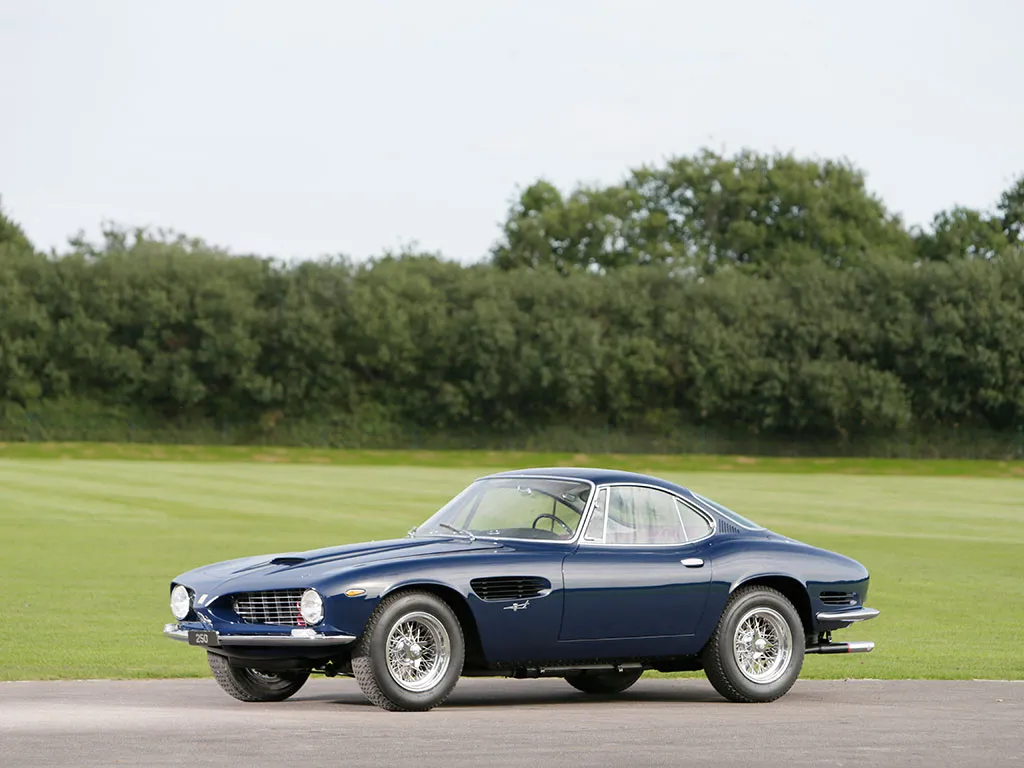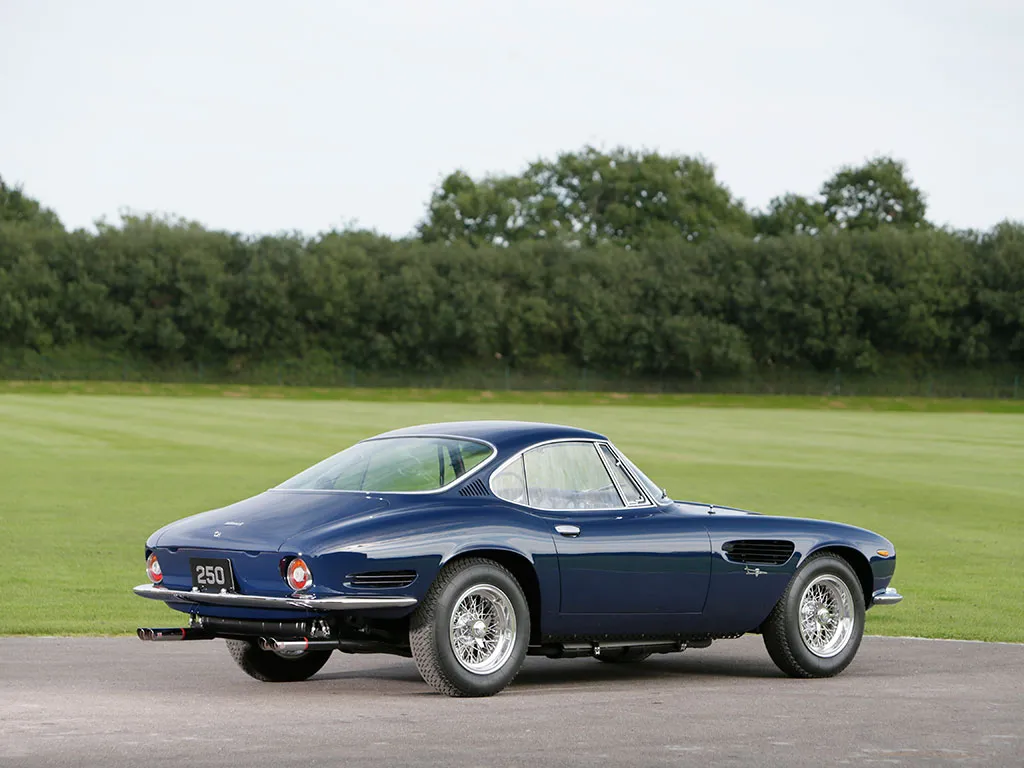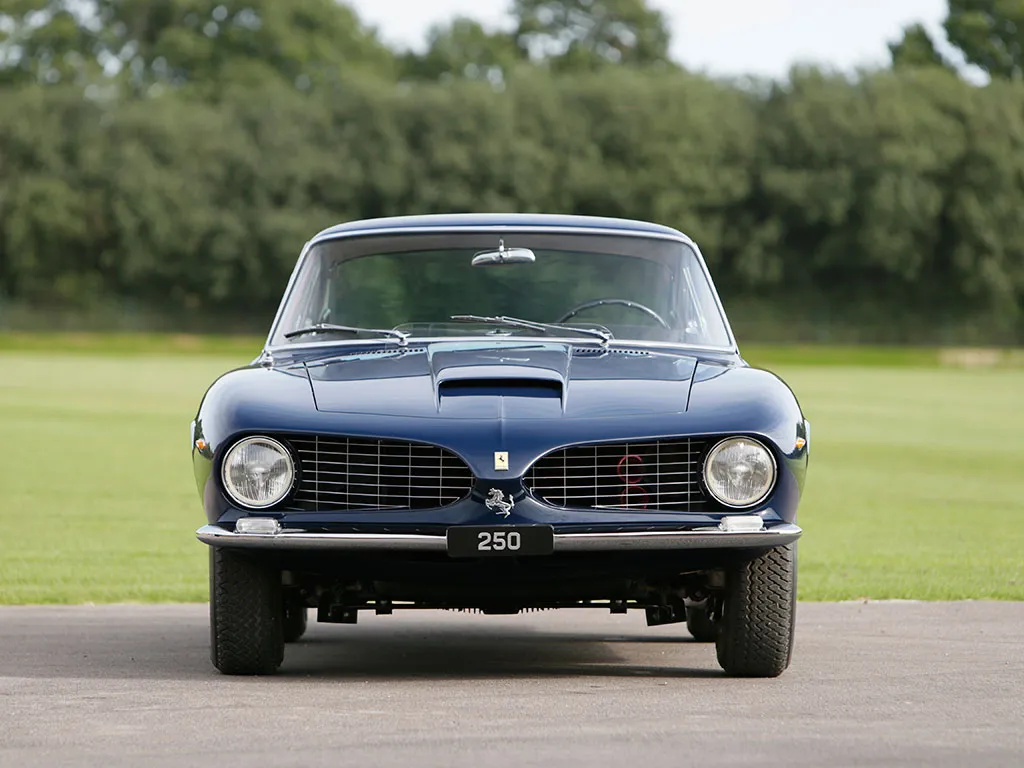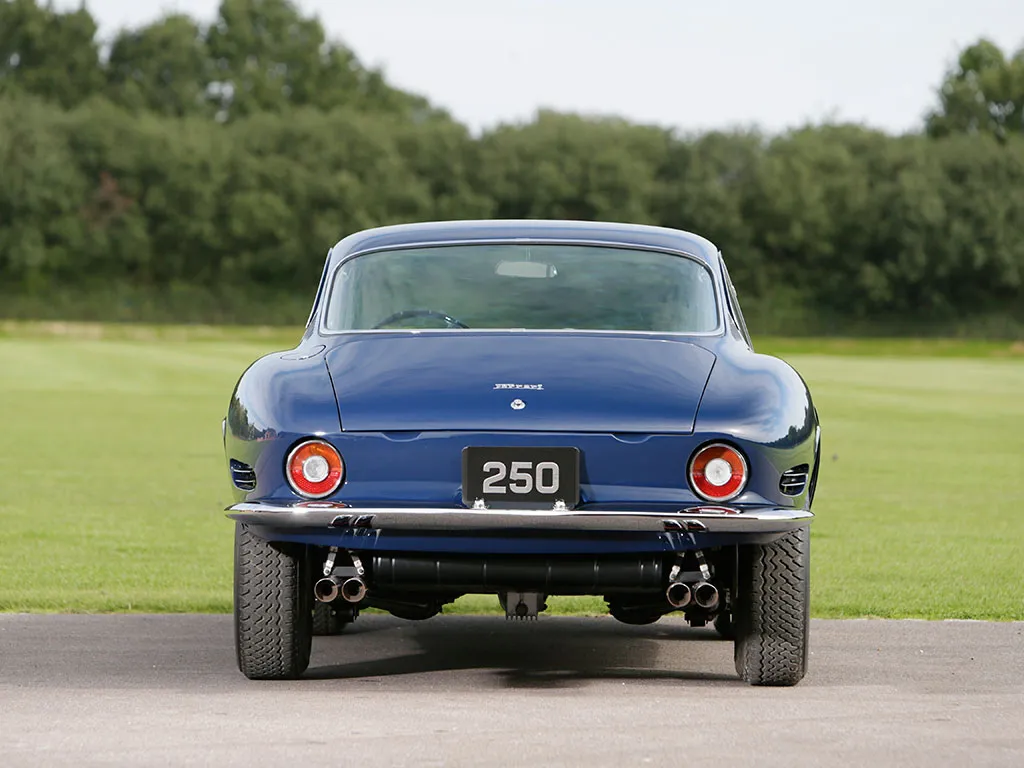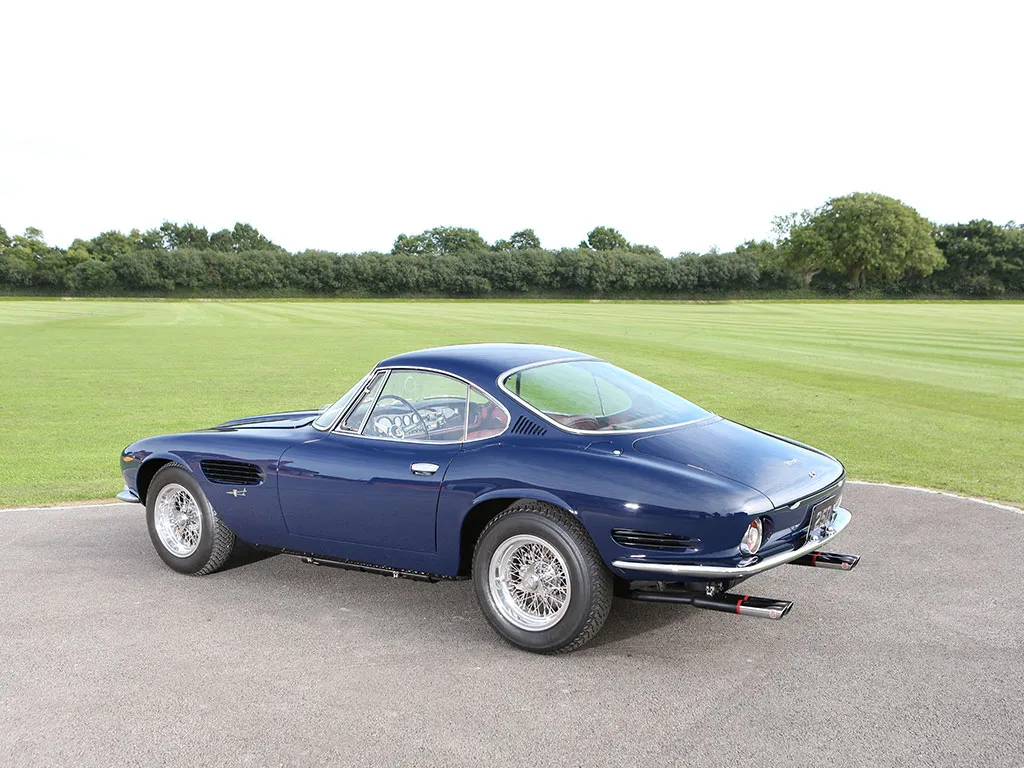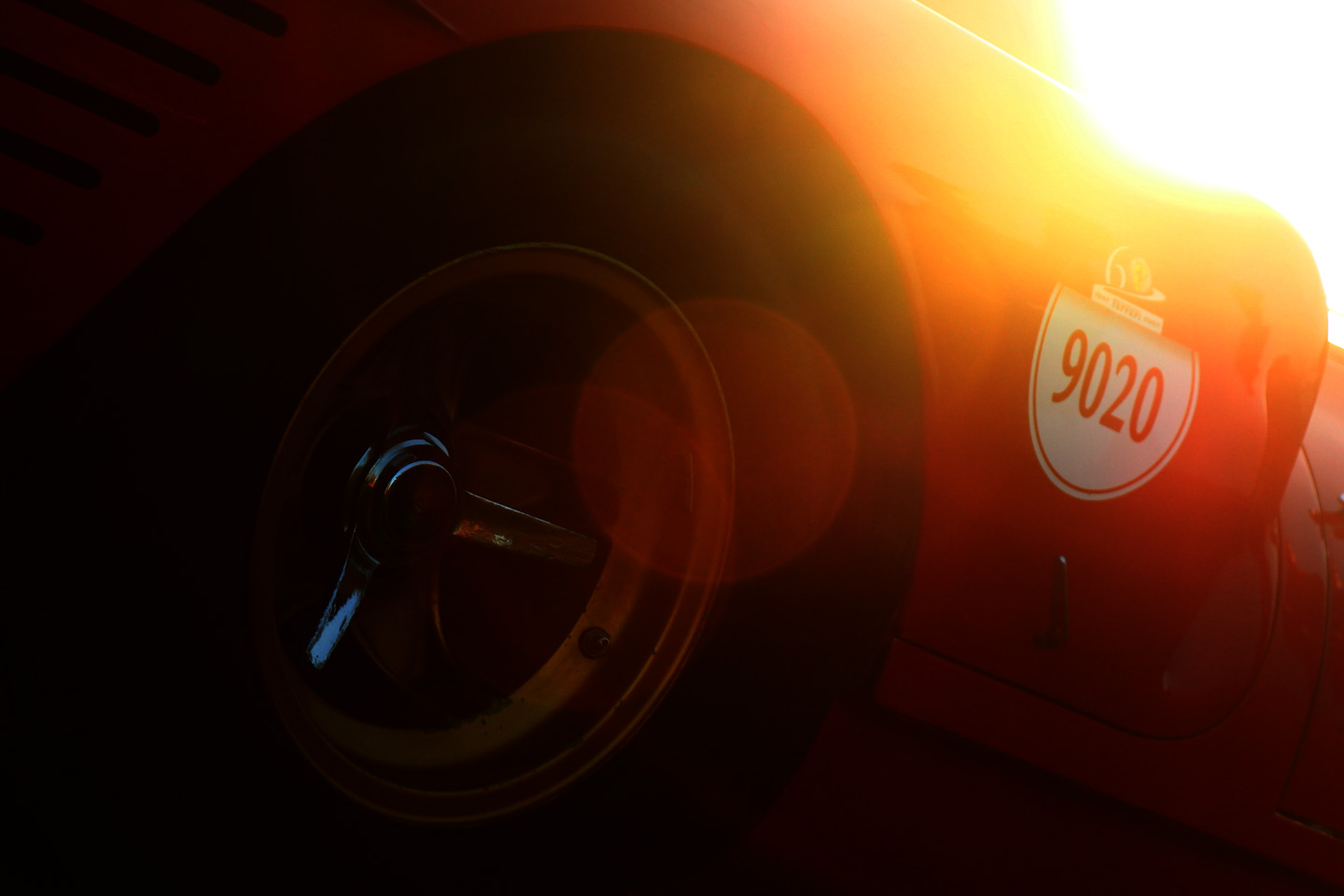Coachwork by Bertone
Chassis: 3269 GT
Engine: 3269
One of the Most Beloved and Recognisable Coachbuilt Ferraris
Giugiaro Design Inspired by Ferrari’s Legendary Sharknose Racing Cars
Nuccio Bertone’s Personal Car; Displayed at Geneva and Torino Auto Shows
The Centerpiece of the Lorenzo Zambrano Collection for Three Decades
Best of Show Winner at Leading International Concours
Complete with Books, Tools, Massini Report, and Ferrari Classiche Certification
PROVENANCE
Nuccio Bertone, Torino, Italy (acquired new in early 1962)
Italo Musico, Milano, Italy (acquired from the above in 1963)
Gerda Anna Speckenheuer, Milano, Italy (acquired from the above in 1965)
M. Gastone Crepaldi, Milano, Italy (acquired from the above in 1966)
Peter Civati, Redondo Beach, California (acquired from the above in 1966)
Bill Karp, Los Angeles, California (acquired from the above in 1967)
Lorenzo Zambrano, Monterrey, Mexico (acquired from the above in 1980)
Previous Owner (acquired from the above)
Purchased by Talacrest August 2015
EXHIBITED
XXXII Geneva Auto Show, Geneva, Switzerland, March 1962
Carlo Biscaretti di Rufa Museum, Torino, Italy, April 1962
XLIV Torino Auto Show, Torino, Italy, November 1962
Pebble Beach Concours d’Elegance®, August 1982
International Ferrari Concours, Monterey, California, August 1994
Concorso Italiano, Carmel Valley, California, August 1994
FCA National Concours, Watkins Glen, New York, August 1996 (Best of Show)
VI Cavallino Classic, Palm Beach, Florida, January 1997
Pebble Beach Concours d’Elegance®, August 1997 (Luigi Chinetti Memorial Trophy)
Louis Vuitton Concours d’Elegance, Paris, France, September 1997 (Best of Show)
Pebble Beach Concours d’Elegance®, August 2003
60 Anni Ferrari Concours d’Elegance, 2007, Fiorano, Italy (3rd in Class)
LITERATURE
Angelo Tito Anselmi and Marcel Massini, Making a Difference, pp. 66, 74–77
Hilary A. Raab Jr., Ferrari Serial Numbers Part I, chassis number listed on p. 40
Ken Gross, Ferrari 250GT SWB, pictured and discussed on pp. 79–80
Winston Goodfellow, Ferrari Road and Racing, pictured and discussed on p. 67
Rob de la Rive Box and Richard Crump, The Automotive Art of Bertone, p. 96
Lucciano Greggio, Bertone 90 Years, 1912–2002: Forma e Progetto. Il Catalogo, pp. 86–87
Stan Grayson (editor), Ferrari: The Man, The Machines, pictured on p. 291
Cavallino, Issue 104, featured article by Alan Boe
Road & Track, March 1990, subject of Salon article
THIS CAR
The Ferrari presented here is an undisputed masterpiece of automotive art – the one-of-a-kind 250 GT SWB Berlinetta Speciale designed by the great Giorgetto Giugiaro and built by the legendary house of Carrozzeria Bertone. Since its debut in 1962, this magnificent and utterly unique car has been acclaimed as both a definitive example of Italian automotive design and a coachbuilt Ferrari of exceptional beauty and significance.
In early 1962, Nuccio purchased a complete 250 GT SWB chassis from Maranello, numbered 3269 GT, and laid out his vision for a spectacular new Ferrari that he would retain for his personal use. Prior to this purchase, Carrozzeria Bertone had fashioned coachwork for just two Ferraris, a 1950 166 Inter Cabriolet built for Franco Cornacchia’s dealership and a 1959 250 GT SWB Coupe commissioned by wealthy industrialist Enrico Wax.
To execute the design of the new Ferrari, Nuccio turned to Giugiaro, a young stylist who had joined the coachbuilder in 1959 and whose first task was to update the popular Giulietta Sprint. Though he would go on to become one of the most talented and influential designers of the postwar era, the 23-year-old Giugiaro had penned only a handful of cars by 1962. Nevertheless, his Aston Martin DB4 GT Jet and a one-off Maserati 5000 GT showcased his remarkable ability to make already outstanding sports cars even more desirable.
Working together, Nuccio Bertone and Giorgetto Giugiaro created one of Carrozzeria Bertone’s most famous designs and, quite possibly, the most memorable coachbuilt Ferrari of all time.
Inspired by Ferrari’s world-championship-winning Grand Prix car, the 156 F1, as well as the 330 TRI LM and 246 SP sports racing cars, the signature feature of Giugiaro’s design was its “sharknose” front-end treatment. Similar to Franco Scaglione’s BAT cars, the leading edge of the bonnet came together in an expressive point, splitting the traditional Ferrari eggcrate grille into two large ovoid openings.
Consistent with the sharknose theme, the bodywork featured several competition-inspired cues, including a Plexiglas bug deflector, a wide hood scoop, drilled rocker trim, and a small trail of louvers following the line created by the rear quarter windows. As in the standard design, the Bertone 250 SWB had extractor vents on the front and rear fenders. While Pinin Farina’s vents were purely functional vertically oriented slashes, Bertone’s were horizontally oriented, oval shaped, and trimmed with decorative slats. Viewed from any angle, the sharknose 250 SWB was an absolutely gorgeous automobile, with voluptuous forms, beautiful flowing lines, and compact, aggressive proportions.
The interior was pure Bertone and far more luxurious than the standard road-going SWB berlinettas, with comfortable leather-trimmed seats, electric windows, and stylish quilted vinyl covering the transmission tunnel, footwells, and sills. The metal dashboard – painted to match the body color – was outfitted with the full array of black-faced Veglia gauges, knobs, and switches, along with a locking glove box and a deluxe radio. Even the steering wheel, with its special black Bakelite rim, was unique to 3269 GT.
Finished in Blu Notte Metallizzato with burgundy leather upholstery, the spectacular coachwork was finished off by a standard Ferrari badge on the upper edge of the nose, a large prancing horse below it, and the classic Bertone badge placed on each front fender, highlighted by a decorative chrome flash. A prime example of the coachbuilder’s art, this marvelous creation showcased the incredible attention to detail, quality construction, and Old World craftsmanship typical of Carrozzeria Bertone.
Nuccio Bertone was obviously very proud of his Berlinetta Speciale, and he introduced it at the prestigious Geneva Auto Show, held in Plainpalais March 15–25, 1962. The unique Bertone Ferrari – the perfect marriage of a 250 GT SWB chassis and a stylish Giugiaro-designed body – must have caused quite a stir. After all, here was the finest Italian sports car presented in a bold and completely original way, yet retaining the fundamental Ferrari character and sharing exotic styling cues with the Scuderia’s latest racing cars.
After the debut at Geneva, Carrozzeria Bertone displayed the Ferrari at the annual carrozzerie exhibition at the famed Biscaretti Museum in Torino. In this exclusive gathering of the latest coachbuilt cars, the Berlinetta Speciale was showcased alongside Pinin Farina’s Superfast III, a Touring-bodied Maserati 3500 GT, and a Dual-Ghia L6.4. Auto Italiana covered the event and its correspondents remarked that cars like the Bertone Ferrari reconfirmed the current trend for rounder, more curvaceous designs, replacing the boxy, conservative styles that had been in vogue throughout the late 1950s and early 1960s.
In May, the certificate of origin was issued for 3269 GT, and the car underwent a variety of revisions at the request of Nuccio. For instance, the body was refinished in metallic silver gray, the Bertone badge was standardized, and the large prancing horse was removed from the lower edge of the nose while a smaller one was secured to the driver’s side grille. In this updated form, 3269 GT was displayed as the centerpiece of the Bertone stand at the Torino Auto Show in November 1962, surrounded by contemporary production cars, such as the Alfa Romeo 2600 Sprint and the new ASA 1000 GT.
Despite all the accolades Nuccio’s Berlinetta Speciale received during its tour of the motor show circuit, Enzo Ferrari never formally acknowledged the car that had so beautifully re-imagined his classic 250 GT SWB. In a rare attempt to communicate with Il Commendatore, Nuccio sent him a Christmas gift in 1962 and was surely pleased to receive the following reply:
“Dear Bertone, your gift and words are the unmistakable signs of a man that is gripped by the same passion that has led me to where I am today. My heartfelt thanks. Your – if you permit me – friend, Enzo Ferrari.”
On March 9, 1963, Nuccio sold the Berlinetta Speciale to Milanese automotive parts supplier Italo Musico. The car’s next owner, Gerda Anna Speckenheuer, sold it on December 30, 1966, to M. Gastone Crepaldi, the official Ferrari dealer in Milano. From there, it was sold in a package of cars to Peter Civati, a Ferrari enthusiast living in Redondo Beach, California.
In 1967, Mr. Civati sold the Bertone-bodied Ferrari to Bill Karp, a drummer living in Hollywood, California. Two years later, the distinctive Ferrari made a brief cameo in Marlowe, a neo-noir film starring James Garner as Raymond Chandler’s famous detective character Philip Marlowe. Though its big-screen appearance was brief, 3269 GT is easily spotted, still finished in silver but wearing black California plates.
Mr. Karp enjoyed the one-off SWB as his sole method of transportation throughout his 13-year ownership, driving it nearly 100,000 miles and even using it to transport his drum kit between gigs at music clubs and studio sessions. He retained 3269 GT until September 1980, when it was sold through Ed Niles to famed collector Lorenzo Zambrano of Monterrey, Mexico.
First restored by Steve Tillack in the 1980s and then by Bob Smith Coachworks in the 1990s, the Bertone sharknose SWB has received numerous awards at concours d’elegance around the world, including several Best of Show honors. Perhaps even more significant than these accolades is the car’s remarkably genuine character, which was officially recognized in June 2007, when 3269 GT was certified by the Ferrari Classiche Department. According to the Ferrari factory, this unique 250 GT retains its original chassis, body, engine, gearbox, and differential, as well as other important components.
For the past 35 years, this extraordinary Ferrari has been the crown jewel in Mr. Zambrano’s famous stable, one of the most impressive private collections of postwar Italian sports cars ever assembled. During this period, this exceptional car has been featured in countless books and articles on Ferrari, Nuccio Bertone, and Giorgetto Giugiaro, and yet it remains as fresh and exciting today as it did upon its debut at the Geneva Auto Show in 1962. Leading Ferrari experts have professed their admiration for this sharknose SWB’s striking design, and many top collectors have attempted to acquire it, but it has remained elusive, jealously guarded by its passionate long-term owner and wholly unavailable for more than 30 years.
A one-of-a-kind 250 GT SWB, designed by Giorgetto Giugiaro for the personal use of Nuccio Bertone, one of the most successful and influential Italian coachbuilders, 3269 GT is a world-class Ferrari that possesses every special quality sought after by discerning collectors. Surely among the most important and distinctive Ferraris ever built.
